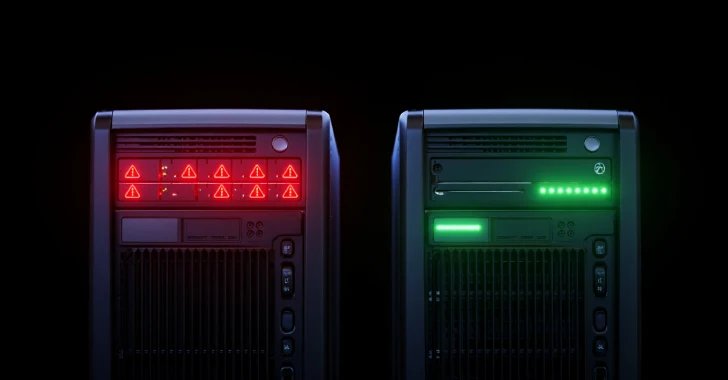Summary Points
-
Cyber Resilience Shift: IT teams are moving from traditional data backup methods to cyber resilience strategies to maintain operations during ransomware attacks, which now incorporate techniques like double and triple extortion and compromise recovery systems.
-
Financial Impact: For SMBs, downtime can cause significant financial loss, averaging over $55,000 per day, requiring a shift in focus to maintaining business operations rather than only backing up data.
-
Key Strategies: Building a resilience-first posture involves conducting business impact analyses, enhancing backup security with immutable, off-site storage, automating backup verification, and creating detailed recovery playbooks to ensure effective incident response.
- Insurance and Compliance: Cyber resilience plays a vital role in insurance and audit readiness, as insurers now require documented recovery capabilities; proving preparedness can lower premiums and facilitate claims.
Underlying Problem
In recent times, the escalation of IT outages and disruptions has prompted IT teams to transition from traditional data backup methods to a focus on maintaining operational continuity during incidents. This shift is largely driven by the growing menace of ransomware, particularly through Ransomware-as-a-Service (RaaS) platforms that empower even technically inexperienced individuals to launch sophisticated attacks. These attacks not only encrypt data but also exfiltrate sensitive information, employing double and triple extortion tactics while targeting vulnerable small and midsize businesses (SMBs) that often lack robust defenses. For these SMBs, the stakes are high; even a single day of downtime can result in significant financial losses and severe reputational damage.
Reporting on this concerning trend, IT specialists emphasize that traditional backup strategies, which once sufficed in a realm dominated by accidental data loss, have become inadequate against targeted cyber threats. To combat these risks, organizations are urged to adopt a cyber resilience strategy, integrating immutable off-site backups, automated recovery testing, and orchestrated recovery plans. This proactive approach not only reinforces a business’s ability to recover swiftly from disruptions but also aligns with the imperatives set forth by compliance mandates and industry standards. As the landscape of cyber threats evolves, the imperative for organizational resilience has never been greater.
Potential Risks
As ransomware threats proliferate and evolve with alarming sophistication, the implications for businesses, particularly small and midsize enterprises (SMEs), are profound. A significant downtime—potentially resulting in staggering financial losses—or a data breach can tarnish not only individual organizations but also ripple across entire supply chains, jeopardizing associated partners and users. The interconnectedness of today’s economies means that when a single business falters due to inadequate cyber resilience, it can set off a cascade of disruptions: customers might lose trust, vendors could face operational delays, and regulatory penalties may ensue, exacerbating the damage. The stakes are elevated as cyber attackers increasingly pursue multi-organizational targets, intensifying the need for a robust, collective safeguard against potential operational paralysis. Thus, businesses must critically assess their cyber resilience strategies, ensuring not merely the capacity to restore data but also a comprehensive framework to sustain operations during an incident, safeguarding not only their futures but also bolstering the security of their partners and stakeholders.
Possible Next Steps
Timely remediation in the context of ransomware is critical; it not only safeguards organizational assets but also preserves operational integrity and minimizes potential losses.
Mitigation and Remediation Steps
- Comprehensive Backups: Implement regular, automated backups that are stored offsite, ensuring data integrity and accessibility.
- Regular Updates: Keep software and systems up-to-date to patch vulnerabilities that could be exploited by ransomware.
- User Education: Conduct frequent training sessions to educate employees about phishing and suspicious activities to reduce vector attacks.
- Access Controls: Enforce strict access management policies to limit user permissions and secure sensitive data.
- Incident Response Plan: Develop and test a robust incident response plan that outlines clear protocols for ransomware scenarios.
- Threat Intelligence: Leverage threat intelligence feeds to stay informed about emerging risks and exploit methods.
- Network Segmentation: Divide the network into segments to contain potential attacks and limit lateral movement of threats.
NIST CSF Guidance
The NIST Cybersecurity Framework emphasizes resilience and swift recovery. Organizations should refer to NIST Special Publication 800-53 for detailed security and privacy controls, focusing on those that strengthen resilience against ransomware attacks.
Advance Your Cyber Knowledge
Explore career growth and education via Careers & Learning, or dive into Compliance essentials.
Explore engineering-led approaches to digital security at IEEE Cybersecurity.
Disclaimer: The information provided may not always be accurate or up to date. Please do your own research, as the cybersecurity landscape evolves rapidly. Intended for secondary references purposes only.
Cyberattacks-V1

